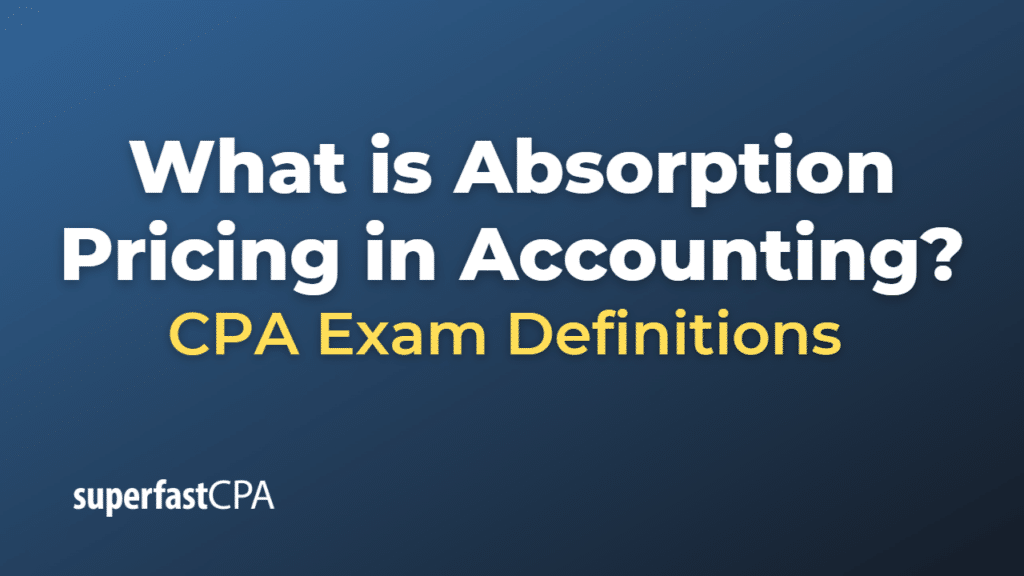Absorption Pricing in Accounting
Absorption pricing, also known as cost-plus pricing or full-cost pricing, is a pricing strategy in which a company sets the selling price of a product or service by adding a markup to the total cost of producing that product or providing that service. The total cost includes both direct costs (such as direct materials and direct labor) and indirect costs (also known as overheads or fixed costs) associated with the manufacturing process.
In absorption pricing, the company calculates the total cost per unit using absorption costing, which assigns all direct and indirect manufacturing costs to the production of goods or services. Once the total cost per unit is determined, a markup or profit margin is added to arrive at the selling price.
The steps involved in absorption pricing are as follows:
- Calculate the total cost per unit using absorption costing, which includes direct materials, direct labor, and overhead costs.
- Determine the desired profit margin or markup percentage. This can be based on the company’s target profit, industry standards, or competitive pricing analysis.
- Multiply the total cost per unit by the markup percentage to calculate the profit per unit.
- Add the profit per unit to the total cost per unit to arrive at the selling price.
Example of Absorption Pricing
Let’s consider a hypothetical example of a company called ABC Furniture that produces wooden tables. The company uses absorption costing to allocate overhead costs to the products and absorption pricing to set the selling price of the tables.
First, let’s gather some information:
- Direct material cost per table: $80
- Direct labor cost per table: $40
- Overhead cost per table (using absorption costing): $30
- Desired profit margin: 20%
Step 1: Calculate the total cost per table using absorption costing Total cost per table = Direct material cost + Direct labor cost + Overhead cost Total cost per table = $80 + $40 + $30 = $150
Step 2: Calculate the profit per table based on the desired profit margin Profit per table = Total cost per table * Desired profit margin Profit per table = $150 * 20% = $30
Step 3: Determine the selling price by adding the profit per table to the total cost per table Selling price = Total cost per table + Profit per table Selling price = $150 + $30 = $180
In this example, ABC Furniture would set the selling price of a wooden table at $180 per unit to achieve a 20% profit margin. This absorption pricing strategy ensures that the company covers all production costs (direct materials, direct labor, and overhead) while achieving the desired profit margin.













